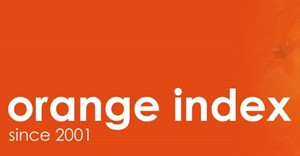Subscribe & Follow
Trending

 Woolworths sees over 20% drop in annual earningsAby Jose Koilparambil
Woolworths sees over 20% drop in annual earningsAby Jose Koilparambil



Jobs
- Technical Journalist Paarl
- Junior Journalist Paarl
- Integrated Client Service Lead Rosebank
- Sales Executive White River
- Personal Assistant Johannesburg
- Head of Strategy Johannesburg
- Television Business Development Manager Johannesburg
- Junior Digital Business Writer Roodepoort
- Sales and Support Representative Nelspruit
- Magazine Advertising Sales Executive Cape Town
Measuring media content - not as simple as it looks
Ask Africa's Strategic Innovations Director, Grant Robertson, attended the recent international Print and Digital Research Forum Symposium in Nice, France. A host of topics were discussed at the Symposium which was attended by researchers. "Measurement was one of the key areas discussed," said Robertson at an exclusive feedback brunch for select media.
"Traditional media has been impacted by the digital world and more people are migrating to reading on digital. (This digital reader is very different to the print reader.) The result is a host of hybrid models from media owners. However there are still more questions than answers and an important one is how do we measure these models?" said Robertson.

The traditional ways of doing research are being eroded away. The result of the digital impact is fragmentation and the result of this is that traditional measurements are picking up less and less of the audience. "As a result we know increasingly less about audiences. Media owners, who are adding various media platforms to their traditional offering, and creating this long tail, want the tail to be measured," explains Robertson.
Passive measures are the future
Data collection still mostly traditional. Very few digital and mixed methodologies are actually used - only South Africa and Uruguay use tablets. However measuring digital platforms is becoming the norm.
Examples of passive measures are being added. Robertson says that this is the future, despite the methodological problems we are experiencing now. "The basics still remain the same, but many companies now measure engagement and softer metrics that are proving to be more valuable as audience behaviour is changing.
"The implications are that the audience response is more important than the number of audience. Media owners want engagement metrics, but our current measuring tools not suited for this."
Today's audiences do not have time for questionnaires or the questionnaires are too long and so the refusal rates are up. Currency extension is being used in the interim, but this is not a long term solution, says Robertson. "Currency expansion is the next step."
There is also no agreement on metrics. "There must be a common metric to be agreed to by the media. In the meantime there is a lot of data coming through, but quality not always good. One robust single survey into which all the other surveys can link into is key, but for this to happen, all the stakeholders must collaborate."
An important point from the Symposium is that print still delivers good value for advertisers. This is despite the forecast that globally print will have a 0% growth (in SA the forecast is 5%). "Over the past five years the global magazine revenue has been flat with big markets such as the US and Europe seeing a decline in revenue."









